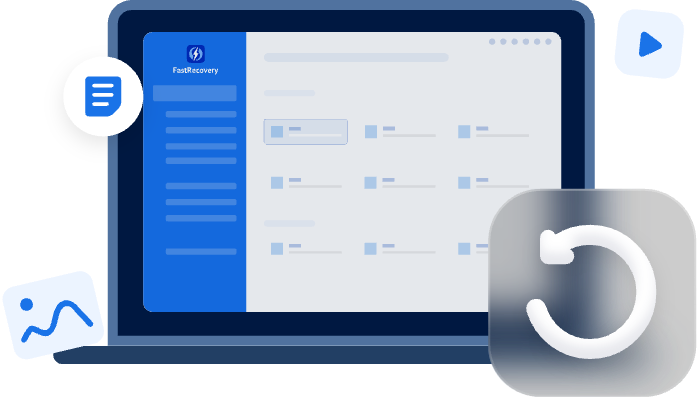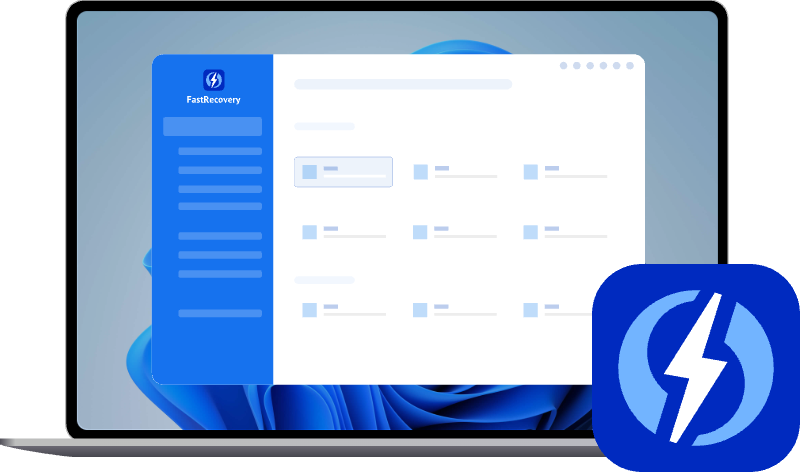Lexar CF Card Data Recovery Quick Guide [FREE Tools]
This article will describe 3 free Lexar CF card data recovery tools, e.g., AOMEI FastRecovery, Lexar Recovery Tool for Windows/Mac, or Windows File Recovery, to recover deleted or lost files.
About Lexar CF Card Data Loss
Data loss on your Lexar CF card is stressful but often fixable. Stay calm and act carefully. Before starting Lexar CF card recovery, you need to learn its common causes and THE key point to increase the success rate.
Why Lexar CF Cards Lose Data?
- Accidental Deletion: Mistakenly deleting files while transferring files or in other scenarios.
- Formatting Errors: Interrupted formatting or formatting the wrong drive.
- Improper Ejection: Removing the card during read/write operations.
- Corruption: Caused by unsafe removal, power loss, viruses, or system crashes.
- Physical Damage: From drops, water, heat, or bent pins.
The Golden Rule: Stop Using the Card Immediately!
- Why: Deleted files still remain on the card until overwritten by new data.
- Action: Safely remove the card from your camera/computer immediately and save it to a safe place. It also includes: don’t take new photos or format this card after data loss.
- Goal: Prevent any new data from being written to protect recoverable files.
How to Recover Data from Lexar CF Card
- 1. Eject the card properly using your device's Safely Remove function.
- 2. Connect the card with a reliable CF card reader.
- 3. Ensure the card and cables are securely plugged in.
- 4. Try reading the card on a different computer or camera to be sure it’s working properly.
- 5. Don’t download and install any recovery software on the original card, as it may overwrite the deleted files.
Option 1: Lexar Recovery Tool for Windows/Mac (Brand-Specific Solution)
Lexar Recovery Tool for Windows or Mac should be your first choice if you are using a Lexar CF card with data loss. It's designed specifically for their cards to recover photos, videos, and documents, and handles common scenarios(e.g., accidentally deleted or formatted)on Windows or Mac versions efficiently.
Step 1. Go to Lexar’s download page, scroll down to Recovery Tools > Software/Firmware, and click Lexar Recovery Tool for Windows or Mac. Then, fill in the necessary info and click Submit to continue.
Step 2. Open the Lexar Recovery Tool. On the Recovery section, select your CF card and click Scan. It will start the scanning process automatically.
Step 3. Select the files you want to recover, and click Recover. Please select a new location to save your data to prevent data overwriting.
✅ Pros:
- Free & Official (Safe, trusted source)
- Simple, user-friendly interface
- Effective for recent accidental deletion/quick formats
- File preview
❌Cons:
- Primarily focused on common photo, video, and document formats
- Slow scanning, especially for large cards.
Option 2: AOMEI FastRecovery (User-Friendly & Powerful)
AOMEI FastRecovery has a clean interface and requires no technical skills, ideal for beginners. It integrates two scanning methods - Quick Scan & Deep Scan, and supports recovering more than 1000 data types, e.g., photos (JPG, RAW, CR3), videos (MP4, MOV), documents, audio, etc., as long as your card is accessible.
- Quick Scan: Integrated in the Hard Drive Recovery section, it takes only 3-5 seconds and is best for deleted files.
- Deep Scan: Integrated in the USB/SD Card Recovery section, it will scan your disk more thoroughly and take longer. It’s best for complex data loss, e.g., formatted card, corruption, etc.
In addition, it still supports some useful features, such as search, filter, file preview, selective recovery, e.g., recover specific files or folders instead of entire scans, saving time and space.
Click the Download button to get AOMEI FastRecovery now!
Step 1. Open AOMEI FastRecovery on your computer after installing. Select your Lexar CF card and click Scan under Hard Drive Recovery.
Step 2. The software first runs a Quick Scan to find deleted files within 3-5 seconds. It displays only deleted files, so you can search or filter files quickly through file name, extension, data types, etc.
Step 3. Double-click the files to preview and confirm you are selecting the right files. Then, click Recover to start Lexar CF card recovery. You don’t need to wait until the process is complete.
- Click Deep Scan immediately afterward if you can’t find the desired data. It takes longer, but searches sector by sector.
- Never save the recovered files back onto the Lexar CF card you're scanning! Otherwise, your files may be overwritten.
✅ Pros:
- Clean interface, requires no technical skills.
- Fast scanning, especially for recovering deleted files.
- Scene matching scanning methods.
- Support a wide range of data types.
- File filter & preview.
- Selective recovery.
❌ Cons:
- Currently only available on the Windows version.
Option 3: Windows File Recovery (Microsoft's Official Tool)
Windows File Recovery is a free, command-line tool, released by Microsoft, to recover deleted/lost files from hard drive, SSD, USB drive, SD card, etc. Note that it’s available on Windows 10 and later.
- 1. Download and install Windows File Recovery from the Microsoft Store.
- 2. Identify the drive letters(e.g., F:) of your Lexar CF card in File Explorer.
- 3. Learn how to use Windows File Recovery, including the syntax and necessary parameters. The scanning mode is critical for success!
Step 1. Search for Command Prompt, right-click, and select Run as administrator.
Step 2. Type commands based on its basic structure: winfr source-drive: destination-drive: [/mode] [/switches]
Regular mode is best for recently deleted files, while Extensive (or Segment for NTFS) is for formatted drives or deeper searches. In addition, Signature (or Segment + /x for FAT/exFAT) is essential for severely corrupted cards or unknown file systems (searches file headers like JPEG, CR2, MP4).
Example 1: Recover recently deleted files (NTFS drive)
winfrF: C:\RecoveredFiles /regular
Example 2: Recover JPG & RAW after Quick Format (FAT/exFAT card)
winfr F: C:\RecoveredFiles /extensive /n *.jpg /n *.cr2 /n *.nef
Example 3: Recover any file from corrupted card (Signature Mode)
winfr F: C:\RecoveredFiles /signature /r
-
F: = sourcedrive(Lexar CF card)
-
C:\RecoveredFiles = destinationdrive(MUST be different drive!)
-
/n *.jpg /n *.cr2 /n *.nef = file filters (add other types like *.mp4, *.mov)
-
/r = Recovers folder structure if possible
Files are saved in folders like Recovery_YYYYMMDD_HHMMSS in your destination drive. Note multiple folders may be created per scan segment.
✅ Pros:
- More flexible, customizable.
❌Cons:
- Command-Line Interface (CLI): No buttons or menus, you need to type commands.
- Steeper Learning Curve: It requires precise syntax and technical comfort.
Closing word
With 3 free tools, you can easily get started with exar CF card recovery. For common files, try Lexar Recovery Tools for Windows or Windows File Recovery. For stable and more advanced features, AOMEI FastRecovery is the best one.
Last but not least, please stop using your card after deletion and remove it safely until you want to recover data from Lexar CF card. Meanwhile, don’t save the recovered files to the original card, which may cause data overwriting.

